How I'm Currently Upskilling as a Senior Data Scientist in Tech (2025 Edition)
Preparing for the age of AI and beyond
👋 Hey, it’s Andres. If you are new here, welcome to my newsletter exploring the journey of becoming and thriving as a data scientist.
Every week I share practical insights to break into the field, stay relevant, and advance your career. Don’t forget to subscribe to not miss future articles, it’s free!
Can I even stay relevant in this field?
That’s a question that has honestly popped into my head several times over the past few months.
Partly out of fear of how quickly technology (and so the field) is evolving, but mostly because I’ve been doing this for 7 years now and I’m genuinely asking: What’s next for me?
This article is going to be a bit different than what I usually post.
I wanted to use this space to think out loud a bit. To be transparent about my career goals, how I’m navigating uncertainty, and what’s currently exciting me about the future of data science.
What I’ll share will likely be most useful if you’re already a couple of years into your career, but I hope it sparks inspiration for those just getting started, too.
Here’s a glimpse of what I’ll cover:
What I’m learning right now and why
How I’m thinking about long-term career moves
The tools I’m picking up (and actually using)
How AI is shaping the way I work
Alright, let’s get to it!
Where I'm at 👨💻
Before we get started, let me give you a bit of context on where I am in my journey, so you can better understand why I’m prioritizing the skills I am. Context is everything!
Right now, I work as a Senior Data Scientist with a strong foundation in product and marketing analytics. I’ve led end-to-end projects, built event-based models, and worked closely with stakeholders to drive real business outcomes.
On the technical side, I’ve led projects end-to-end, from building robust pipelines in SQL and Python, to deploying models and monitoring them in production. I’m comfortable working across modern data stacks (dbt, GCP, Looker), and have spent years translating messy business problems into clean, scalable solutions.
So the things I’m focusing on today might look different from what someone earlier in their journey might choose.
My #1 rule: Make your job pay for your growth
While everyone around me is focused on salary and title promotions, I’m at a point in my career where I’m thinking about something else:
What does my current job offer in terms of long-term career growth?
Your job is one of the best (and most underused) opportunities to grow your skillset. You’re already getting access to real data, cutting edge tools, and smart people (hopefully), so I treat that as a growth opportunity I can’t afford to overlook.
Right now, I’m actively pushing for projects that stretch my abilities. I champion tools I want to learn. I treat stakeholder requests as chances to sharpen the skills that will matter in my next role, not just the one I have now.
And of course, I take full advantage of any conferences or events my company is willing to cover:
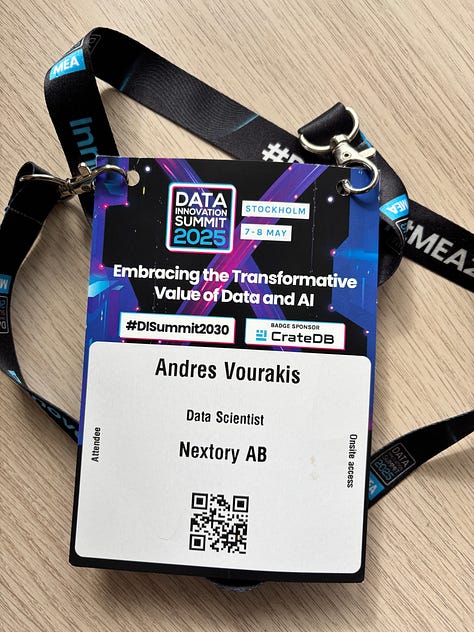


The way I see it, your job is always trying to maximize your output, that’s just the nature of a business. So make sure you’re maximizing what you get out of it.
That’s how I make sure my job pays for my growth.
My plan to future-proof my Data Science career
These three pillars represent where I’m investing my time, energy, and curiosity right now. They’re not job titles, they’re areas I believe will matter more and more as this field continues to evolve.
1. AI-Augmented Analyst
Over the past couple of months, I’ve been actively integrating GenAI tools into my workflow. From using ChatGPT to prototype code and brainstorm analysis strategies, to experimenting with tools like PandasAI and lightweight agents to automate early EDA
I’ve started treating AI less like a novelty and more like a teammate. This isn’t about replacing myself, it’s about scaling what I can do, reducing friction, and staying focused on higher-leverage thinking.
💡 I plant to start a series of articles on this topic, so you can see how I use AI to streamline/automate my work. Hopefully the first article will be out next week 🤞
2. ML & MLOps
I have a degree in Computer Science with a specialization in Machine Learning. It’s where my journey in tech began, but over the years, my work shifted more toward analytics, experimentation, and business impact. Now, it feels like I’m closing the loop.
I’ve started leaning back into the engineering side: System design, deploying models, monitoring performance, and understanding what it takes to build things that actually run in production.
💡 MLOps is no longer a niche skill, it’s one of the most in-demand capabilities on modern data teams. Companies don’t just need insights; they need robust, scalable solutions that deliver value beyond the notebook.
This is the part of my journey where I’m reconnecting with my technical foundation this time, with real-world context and intent.
3. Human-First Strategist
One area I’ve been investing more in lately is the human side of things, less about communicating findings, more about aligning with decision-makers, shaping strategy, and knowing when to speak up or hold back.
I’ve developed many of these skills over the years, but after I started mentoring, creating content online, and writing this newsletter, I can truly see a huge improvement in how I distill complex ideas into something others can act on (and are drawn to).
For me, it’s not just about storytelling anymore, it’s about influence, timing, and understanding how insights actually drive decisions in a real organization.
What’s new in my tech stack?
I thought I should also mention a few of the tools I’ve been exploring or slowly adding to my stack. Some are already part of my day-to-day. Others? I’m still figuring out if they’re worth it, so here they are (in not particular order):
Cursor AI (actively using): My company covers it, and I use it daily. Great for generating boilerplate code, writing READMEs, and speeding up model development.
Windsurf (actively using): My go-to AI IDE for personal work. It’s what I used to help me build Applio, and honestly, I prefer it over Cursor AI.
Poetry (actively using): A much cleaner way to manage dependencies, finally making the move away from
requirements.txt. I’m also keeping an eye on UV to help me improve package management.Pydantic (learning): Getting comfortable with data validation and type safety in Python, essential now that I’m back to building pipelines and ML systems more often.
Soda (learning): Just recently got started with this one. It’s what we use at work for monitoring and alerts, super helpful as I dive deeper into MLOps.
Vertex AI (learning): Not my favorite, but since I’m already deep in GCP,
what the hellit fits naturally. It’s helping me understand model deployment workflows better.Google ADK (Agent Developer Kit) (experimenting): I’ve been exploring agent-based workflows over the past couple of months, and ADK is the latest tool I’m testing to help streamline parts of my analysis process. Still early days, but it’s showing promise.
Notion: Not brand new in my stack, but it’s become essential. I use it to keep my thoughts, plans, and documentation organized. It’s replaced Google Docs and Drive for a lot of the things I do solo.
Keeping doors open
I’ll be honest, I don’t know exactly what’s next for me.
But that’s kind of the point.
The moves I’m making right now aren’t tied to a fixed goal. They’re intentional steps to keep doors open, to give myself options as the field evolves and as I grow into the next version of my career.
Maybe I’ll lean further into MLOps and become more of a machine learning engineer.
Maybe I’ll aim higher and work toward a CTO path.
Or maybe I’ll stay close to what I love most: building things, mentoring others, and shaping strategy from the inside.
I don’t have a final destination picked out yet. But I do know this: I’m building the kind of skills that will let me choose when the time comes.
And to me, that’s what a long-term career is really about.
A quick note 🔖 if you're early in your career
If you're just starting out (I know many of my readers are), I want to share a small disclaimer:
This article isn’t meant to be a checklist or a step-by-step guide for you to follow immediately. Think of it more as a window into what might come later, something to keep in the back of your mind as you grow.
I’ve been in this field for over 7 years. I started as a data analyst, took unpaid internships, got laid off from my first full-time job, and even moved to another country to keep pursuing a career in tech. I spent a year as an Analytics Team Lead and hiring manager, then made the conscious decision to go back to being an individual contributor.
All that to say, I’ve been around, dealt with some unexpected sh*t, and figured out my path along the way.
So if you’re early in your journey, don’t try to rush. There’s so much value in taking your time, getting your hands dirty, and figuring out what kind of work actually excites you. Some of the lessons in this piece only make sense after a few years of trial and error, and that’s okay.
Use this article as inspiration, not instruction. You’ve got time (even if it may not seem like it) 🙏
A couple of great resources:
💼 Job searching? Applio helps your resume standout and land more interviews.
🤖 Struggling to keep up with AI/ML? Neural Pulse is a 5-minute, human-curated newsletter delivering the best in AI, ML, and data science.
🤝 Want to connect? Let’s connect on LinkedIn, I share lots of career bite-size advice every week.
Thank you for reading! I hope this guide helps you elevate your analysis
See you next week!
- Andres
Before you go, please hit the like ❤️ button at the bottom of this email to help support me. It truly makes a difference!


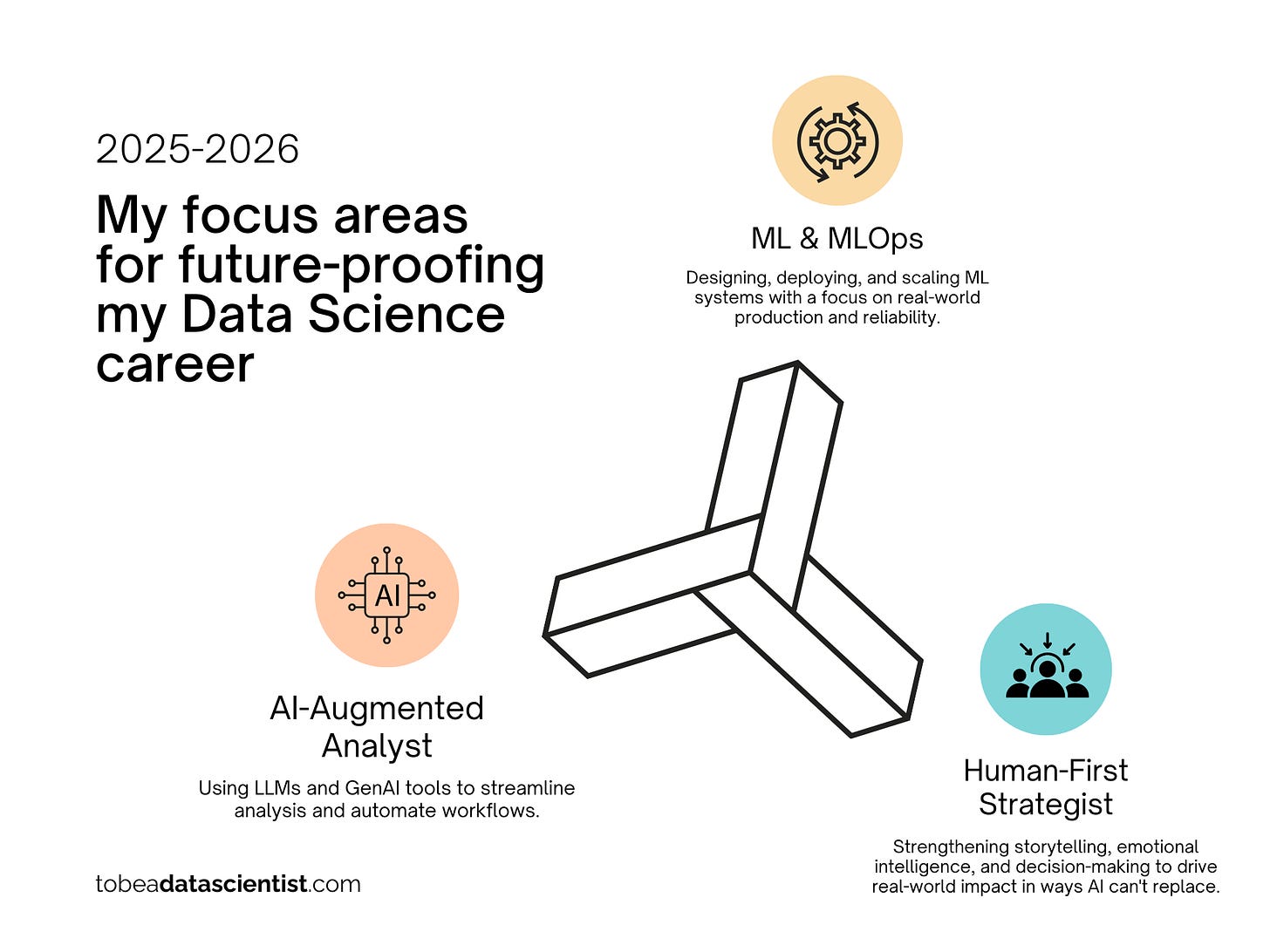
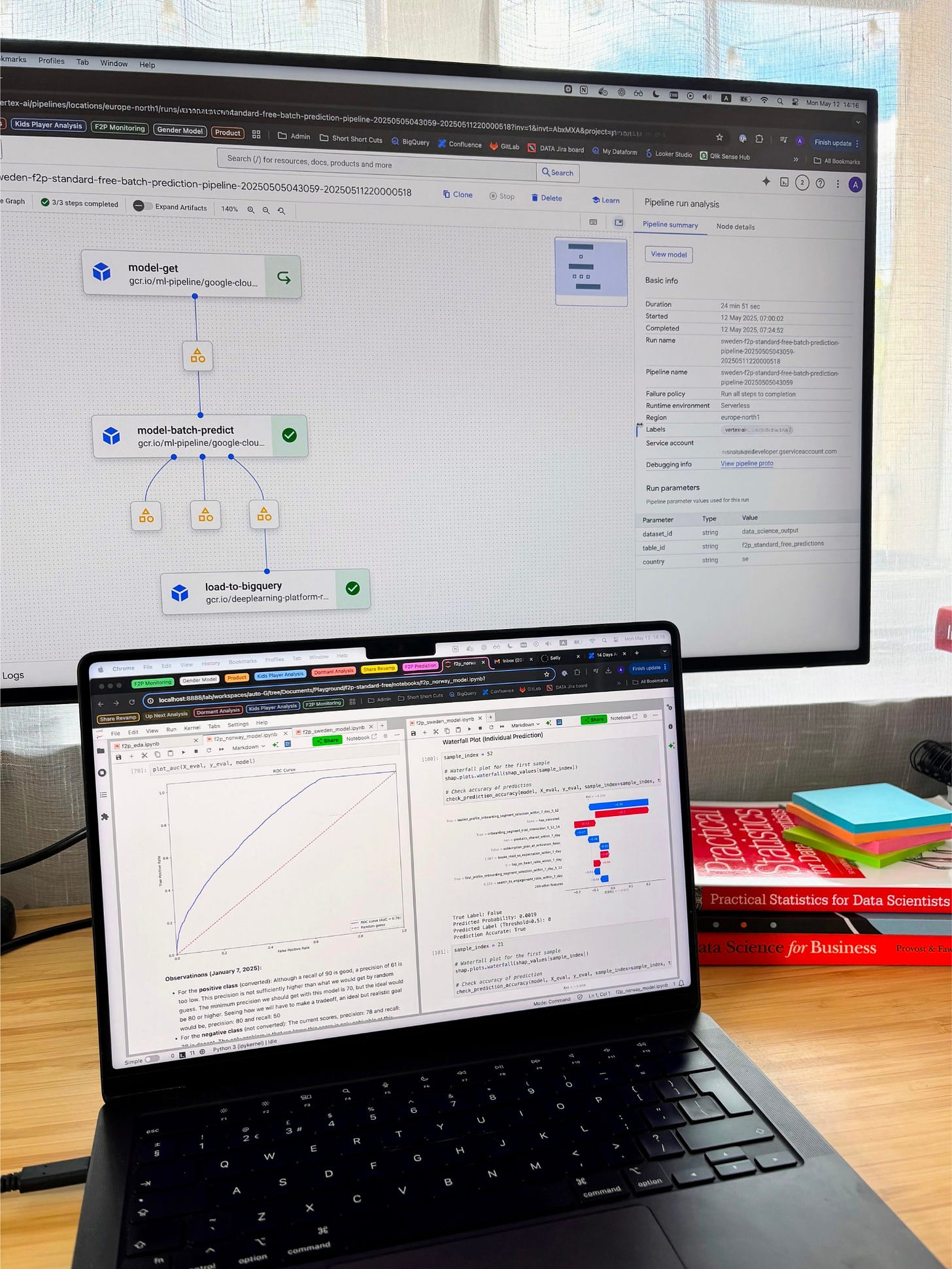

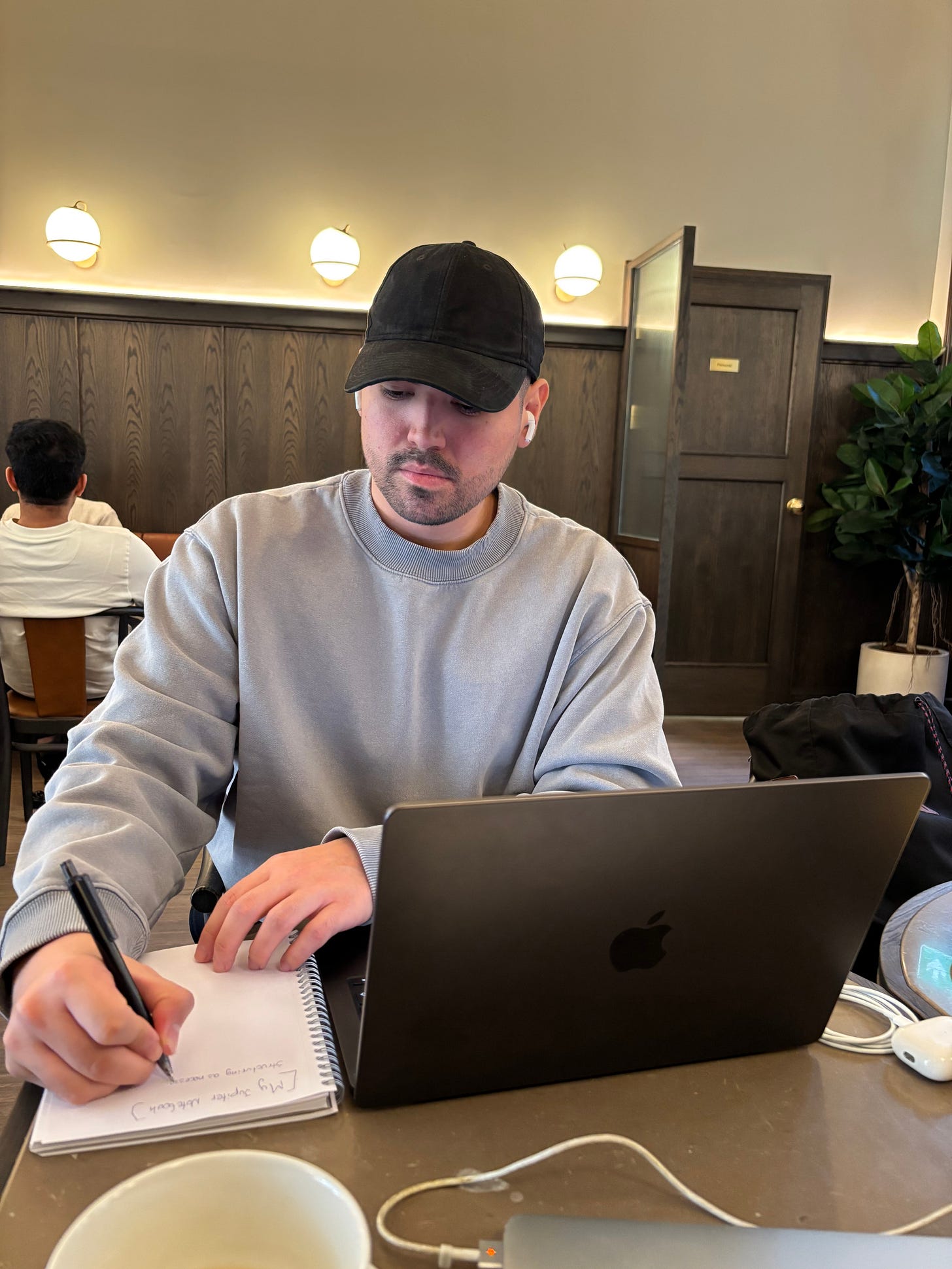
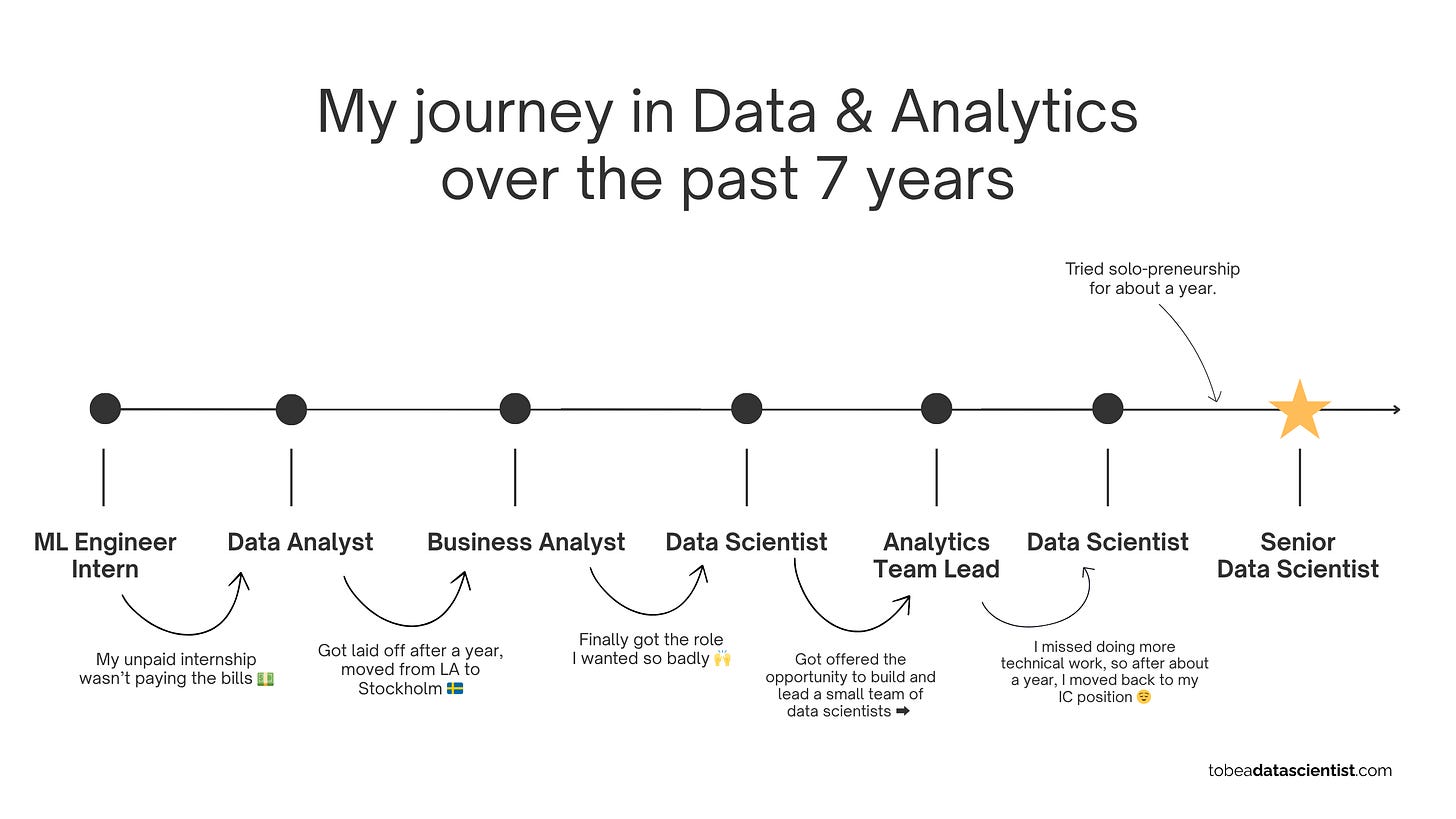
Very motivational article. thank you for sharing
I’d go for MLOPs! You can be CTO at any startup, but fighting the MLOPs fight can’t be done in lots of places at scale.